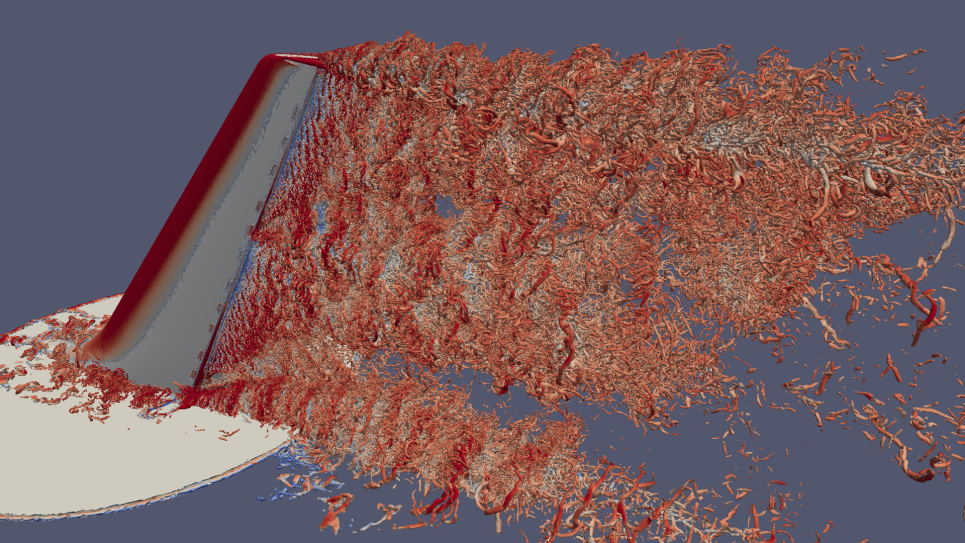
Adaptive DES of a Vertical Tail/Rudder Assembly with Active Flow Control
This project is economically motivated by the goal of redesigning control surfaces to reduce their size, thus reducing jet fuel usage at a cost savings of approximately $300 million per year. With this INCITE award, researchers propose to perform adaptive detached eddy simulations of synthetic jet active flow control on a vertical tail/rudder assembly. The simulations will provide insight into open scientific questions on 3D active flow control through a significant range of Reynolds numbers.
This effort builds on 2 ESP and 4 INCITE campaigns where computational models of a vertical tail/rudder assembly with 12 synthetic jets were validated against experiments, but at a Reynolds number 53 times smaller than flight conditions. The team will attempt a similar simulation, on Mira, at a five times higher Reynolds number, which will give insight required to eventually carry out the first-ever, flight Reynolds number DES validated against experiments.
Synthetic jet flow control may also prove effective in increasing or decreasing the lift on timescales rapid enough to offset the unsteady wind environment that wind turbines operate in. This would reduce the unsteady loads that are detrimental not only to wind turbine blades but also to the gearboxes used to convert wind energy to electric power. Understanding the fundamental flow physics of these synthetic jets is essential to these and other applications.
The computational approach used for these simulations is a finite-element based flow solver, PHASTA, employed with anisotropic adaptive meshing and partitioning procedures. An excellent match to the active flow control simulations of complex and realistic wing configurations, these tools are applicable to flow problems that involve complicated geometries or complex physics.

